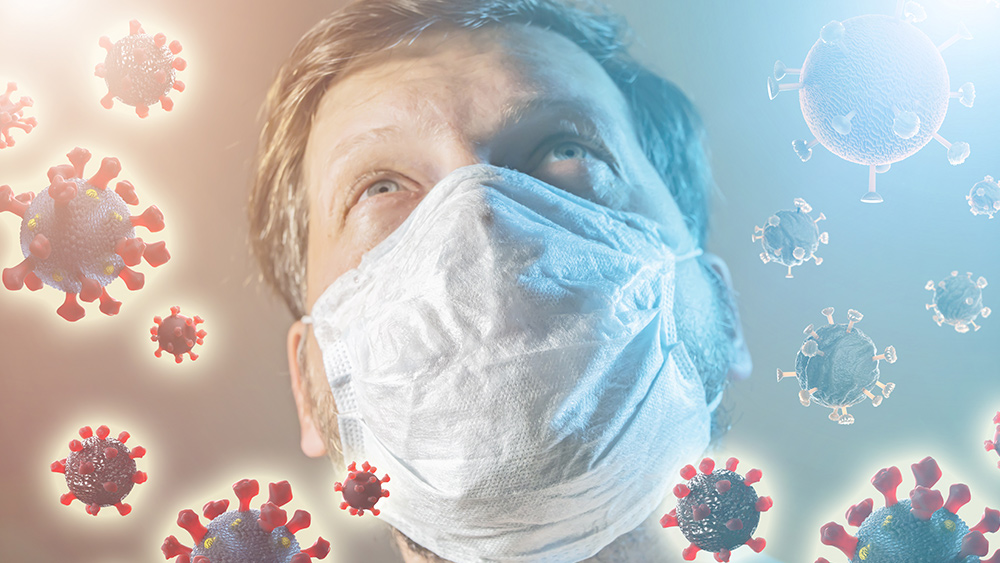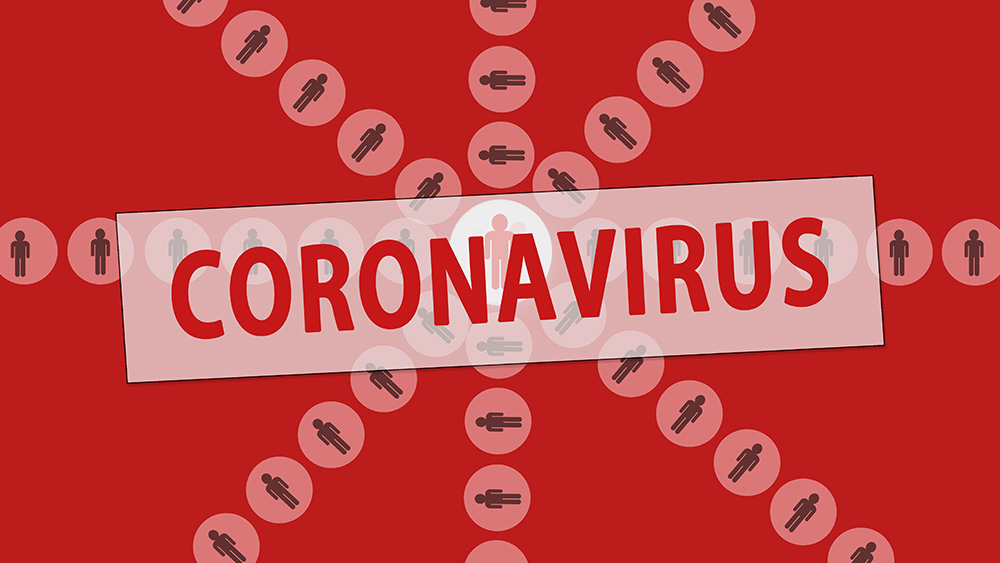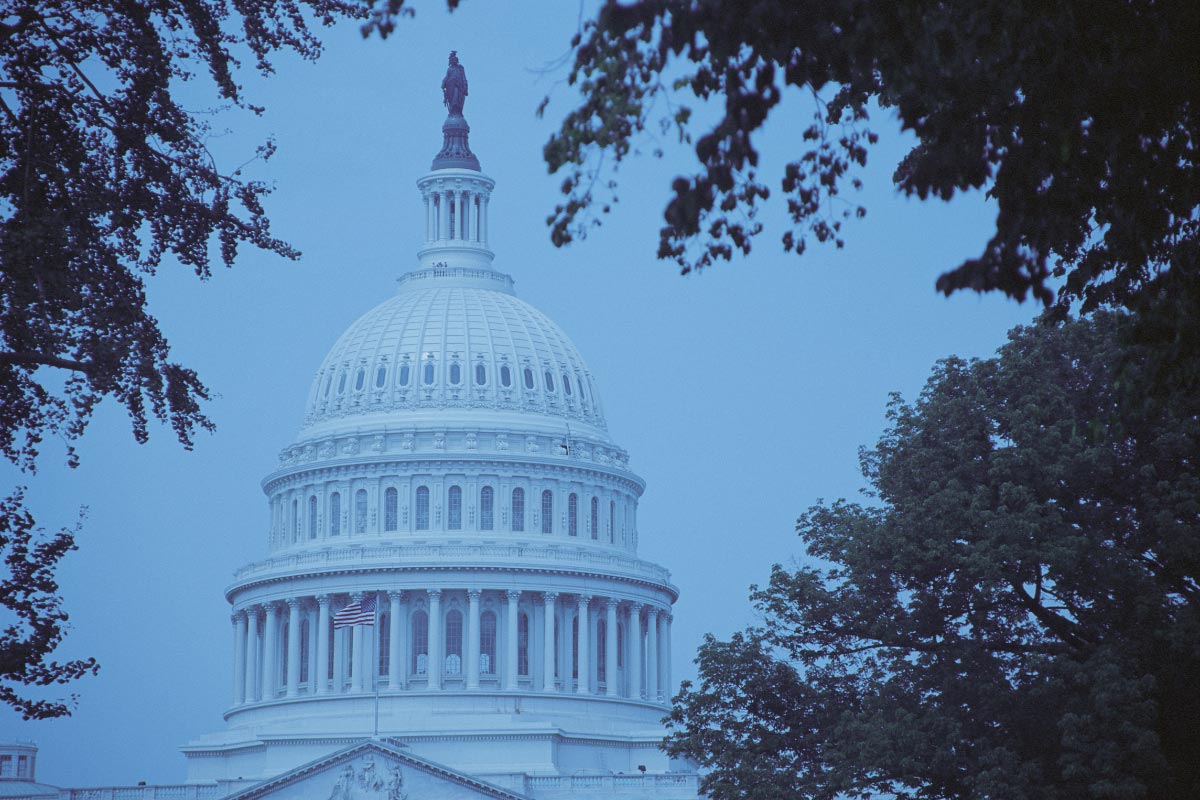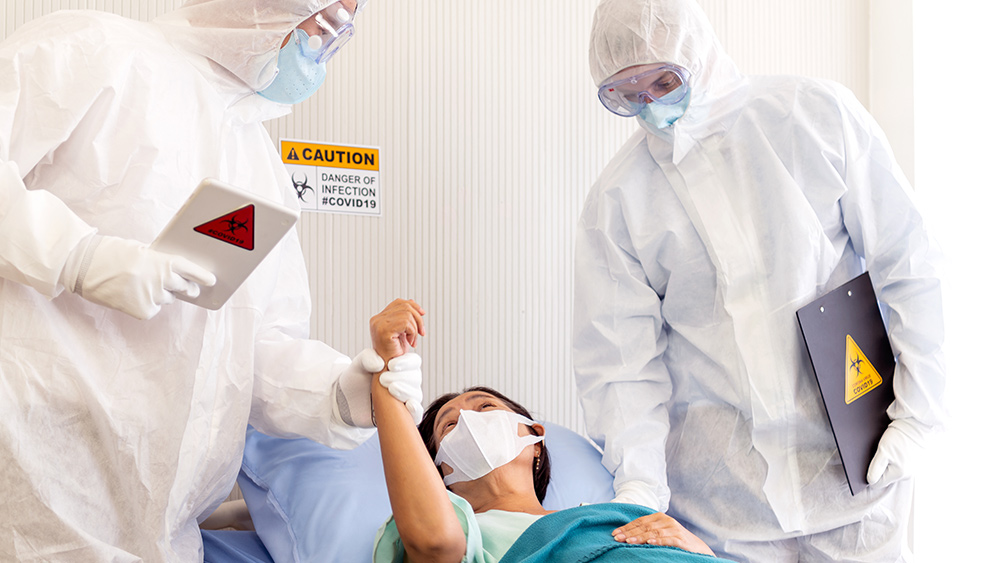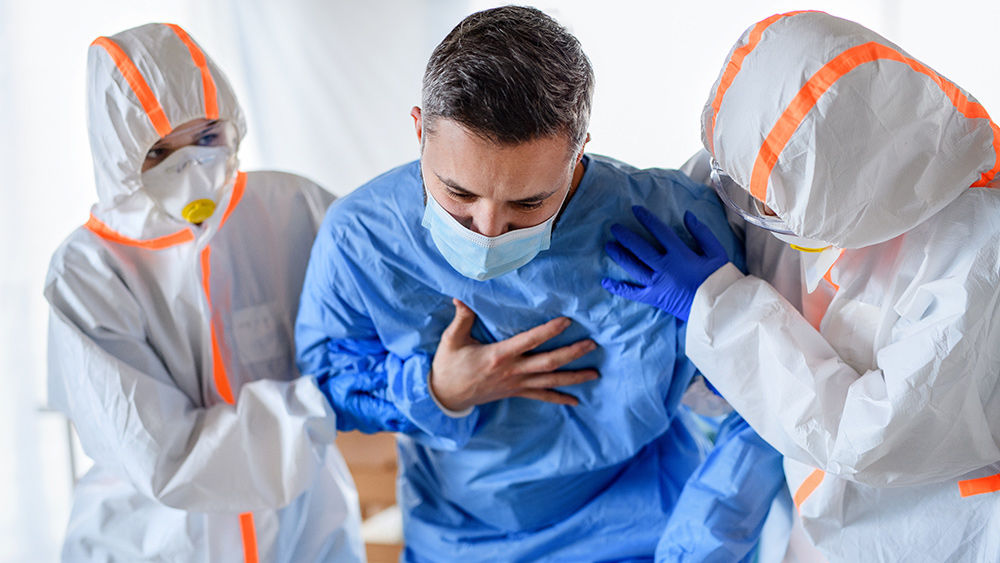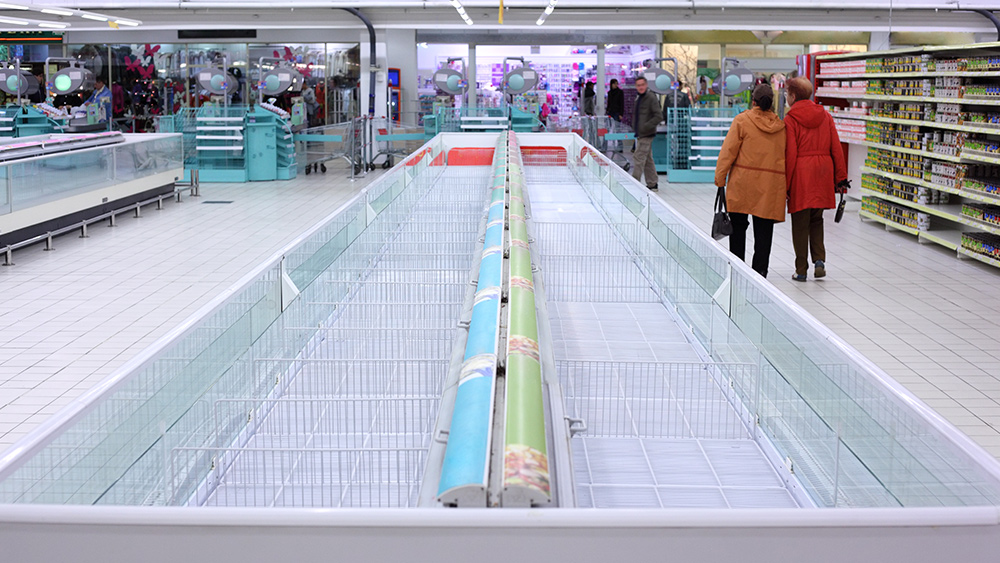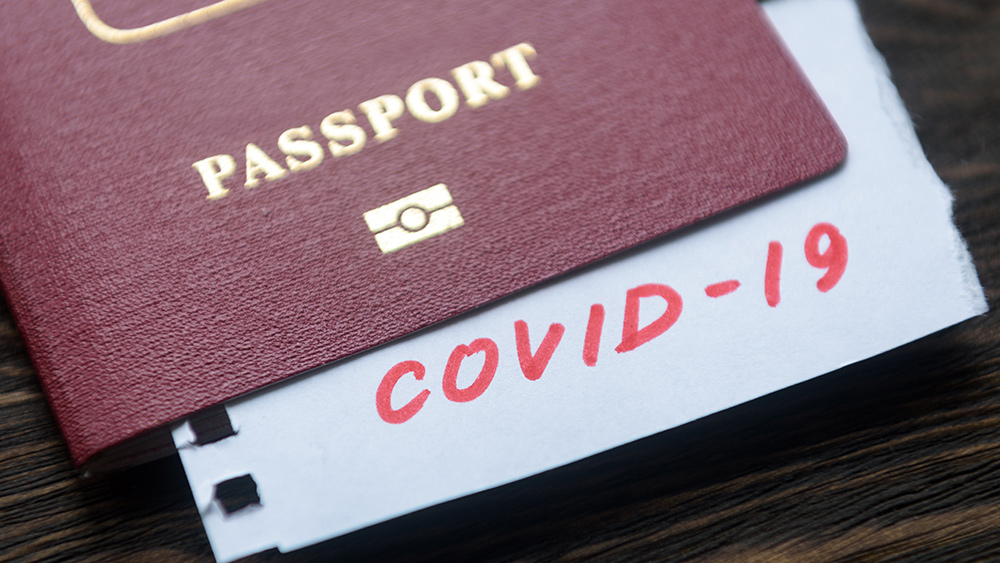Doctors, nurses report dire shortage of protective gear – it’s like going to war with no weapons
03/22/2020 / By Ralph Flores

As America continues to wage war against the coronavirus pandemic, which has since infected over 26,000 people and caused around 340 deaths as of this writing, healthcare workers are saying they’re running low on protective gear — putting themselves (and the people they treat) in peril.
Reports by ProPublica and the New York Times provide a harrowing glimpse of the dangers that doctors and nurses face. In Massachusets, which has over 500 COVID-19 cases, health workers in Boston’s Brigham and Women’s Hospital are washing and reusing single-use face shields to extend their limited supplies.
In California, which is home to over 1,400 cases, emergency room (ER) doctors have resorted to storing dirty masks in plastic containers for later use, and intensive-care nurses in Illinois have been told to make single-use masks last for five days.
A pediatrician in Washington state has been spraying her mask with alcohol after using it to make her small stock last.
“The situation is terrible, really terrible,” said Dr. Niran Al-Agba, the pediatrician, speaking to the New York Times. “I don’t know if we’ve ever had to go to work and fear for our lives in the same way.”
She’s also been conducting “car visits” to patients who have a cough or a fever. The patient pulls up to the side of the office, and Dr. Al-Agba approaches the vehicle, wearing goggles, a mask, gloves and a hazmat suit.
Last week, doctors at the Memorial Sloan Kettering Cancer Center in Manhattan were informed that they only had a week’s worth of respirator masks.
In a survey by NBC News, doctors report trying to buy from online platforms such as eBay — to visiting hardware stores — just to obtain masks for use.
To address the national shortage, editors at JAMA are asking best practice guidelines on reusing PPE, as well as novel materials for use.
“We seek creative immediate solutions for how to maximize the use of PPE, to conserve the supply of PPE, and to identify new sources of PPE,” the editors wrote. “We are interested in suggestions, recommendations, and potential actions from individuals who have relevant experience, especially from physicians, other health care professionals, and administrators in hospitals and other clinical settings.”
Masks and other personal protective equipment (PPE) protect healthcare workers from infections, reducing the chances of touching, being exposed to and spreading germs. For fighting the coronavirus, however, front line workers need a huge supply of masks, especially since they have direct contact with the patients and should change them regularly. The World Health Organization’s guidelines call for surgical masks to cover their mouths and noses, but some hospitals require N95 masks, which can block out much smaller particles than surgical masks do.
The Centers for Disease Control and Prevention, in response, loosened its guidelines for protective gear, reports ProPublica. When no masks are available, the agency suggests using homemade masks as a last resort.
Healthcare workers beg #GetMePPE
Amid dwindling supplies, doctors, nurses and other healthcare workers are taking to social media to plead for additional PPE. The hashtag #GetMePPE was first tweeted by Dr. Esther Choo, an ER doctor at Oregon Health & Science University, blew up this week as healthcare workers across the country responding, each showing pictures of the supplies they have left, sharing their stories on how they’re forced to be creative in reusing their supplies, and asking the public to donate masks and other medical equipment.
FRONTLINE HEALTHCARE WORKERS
Share a pic of the PPE you're in that you need to stay safe
Tag your congresspeople and @VP
Use the hashtag #GetMePPE
— Esther Choo (@choo_ek) March 17, 2020
“I mean, some people were showing how they’re on day five of using equipment that we normally would use once and then discard. People were showing how they were kind of ‘MacGyvering’ equipment together or purchasing their own equipment,” Choo tells Fox12 Oregon. “People were messaging me and also posting about how they stopped at Home Depot on their way to the hospital. I mean, I don’t think I ever would have imagined a time where we would stop by a hardware store on the way to the hospital in order to be properly equipped.”
I found two boxes on my doorstep this morning. Thank you whoever you are. This independent doctor is forever grateful. #GetMePPE #ppeisnotoptional pic.twitter.com/sJybfAeEJC
— Niran Al-Agba MD (@silverdalepeds) March 17, 2020
To cope with the shortage, many doctors like Dr. Al-Agba rely on community donations. She recently tweeted how an anonymous donor left two boxes of masks at her doorstep.
“I will make them last,” she says. “We’re really improvising here.”
Other doctors, however, aren’t as lucky: in California, an ER doctor reports that her hospital has already started treating COVID-19 cases, even as their supplies are running out.
Dr. Vidya Ramanathan, a pediatrician working in a Michigan hospital, says that the need is dire — the hospital she works for reports that there aren’t enough sanitizer wipes to clean face shields and their masks are running dangerously low. Currently, the hospital has set up tents outside the building to triage patients, a process that allows the hospital to extend its diminishing supply of PPE.
Lack of PPEs imperils front-liners
As healthcare workers grapple with treating patients without proper protective gear, they also risk becoming victims themselves, or worse, infect their patients.
This is precisely what happened to Dr. John Gavin, an ER doctor in Amite, Louisiana, who tested positive for COVID-19 after working without proper protective equipment for nine days. Speaking to ProPublica, he says that at the time, Hood Memorial Hospital, where he was working, only provided paper masks during his shift and that no gowns or N95 respirator masks were given to protect from particles and liquids.
“No, no, we didn’t have any of that,” he said. “They offered us paper face masks, that’s it.”
To make matters worse, there was a period of time before Gavin exhibited symptoms that water in Amite was shut off, forcing him and his colleagues to wash using hand sanitizers.
Unfortunately, Dr. Gavin’s story is becoming all too common these days, as ERs across America strain to keep the virus from spreading — no small task, as researchers say that the novel coronavirus has an R0 value of up to 7.5, that is, a person infected with COVID-19 can potentially infect seven people.
According to the American College of Emergency Physicians, at least two ER doctors who have tested positive for COVID-19 are in critical condition.
In Indiana, an ER doctor also tested positive for COVID-19 on Thursday. According to Methodist Hospitals, where he last worked between March 14 and March 16, the physician is now in isolation.
“It’s very anxiety-provoking for an emergency physician,” explains Dr. C. Ryan Keay, an ER doctor in Everett, where the first COVID-19 case was confirmed. “In the back of everyone’s mind is, ‘Could I be taking this home to my family?’”
“What if I get sick?”
Learn more about the coronavirus pandemic at Pandemic.news.
Sources include:
Tagged Under: China, coronavirus, covid-19, Flu, Hospitals, infections, outbreak, pandemic, PPE, superbugs, virus

